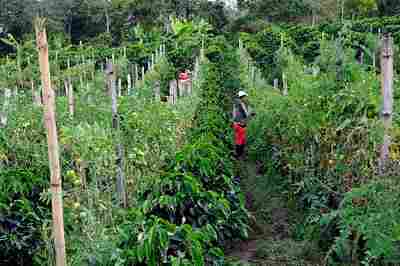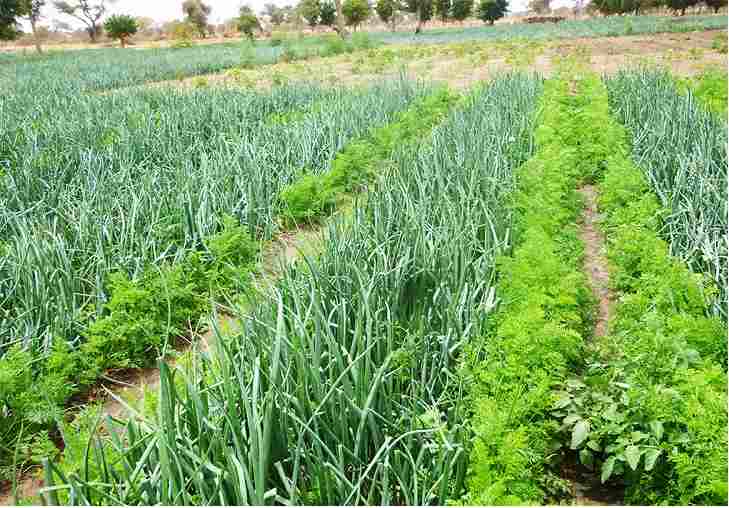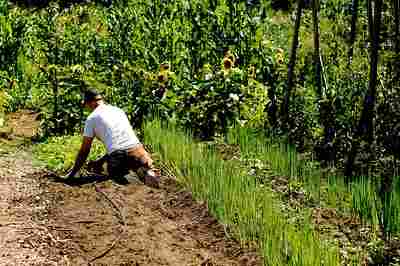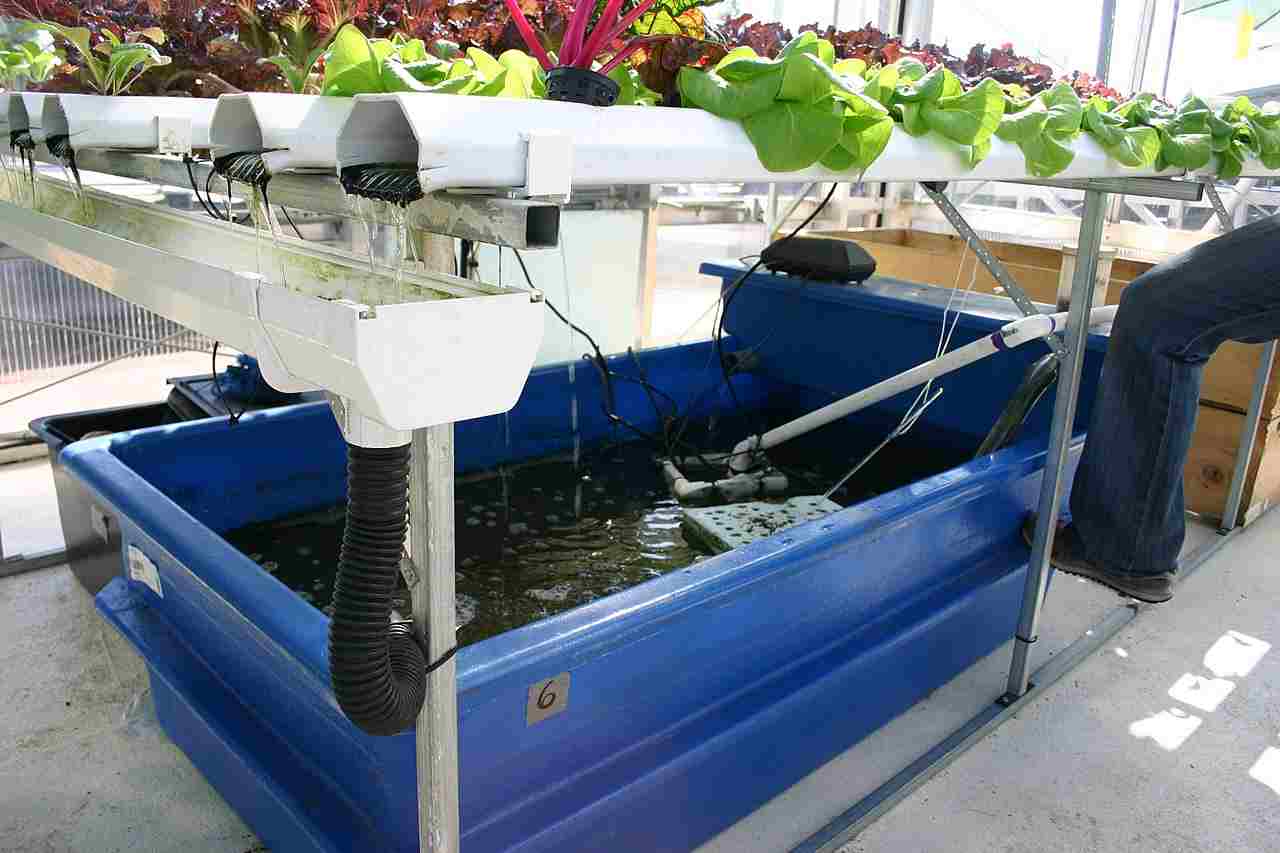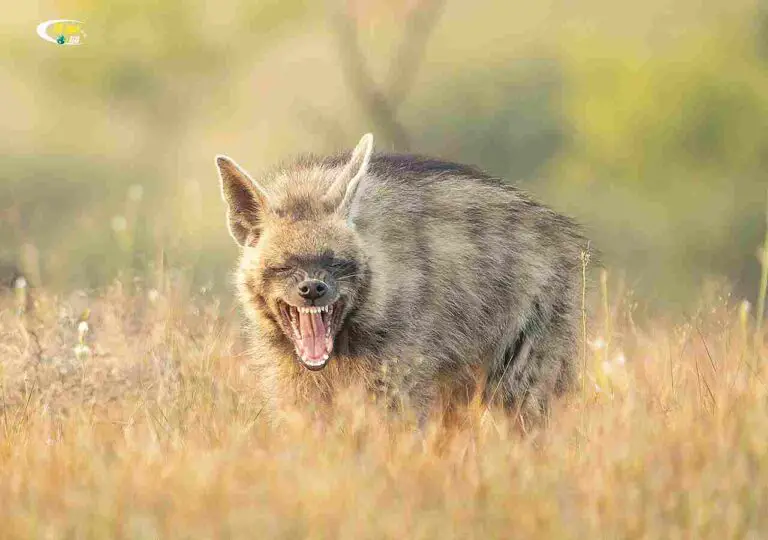7+ Disadvantages of Intercropping Discussed
Disadvantages of intercropping are; relative time consumption, increased labor cost, high overall complexity, requirement of expert knowledge, potential low yields, possible pest and disease infestation, potential incompatibility of crop species, as well as intensive planning and maintenance.
This article discusses the disadvantages of intercropping, as follows;
1). Relatively Time Consuming: One of the Disadvantages of Intercropping
Intercropping; a farming practice where multiple crops are cultivated together within close proximity, offers several benefits such as improved yield, biological pest control, and efficient resource utilization.
However, it also comes with certain disadvantages, one of which is that it can be time-consuming compared to conventional cropping methods an even some other sustainable farming practices. This section highlights the implications of such time-intensive attributes on the outcome and efficiency of intercropping.
How Time-Intensive Procedures Affect the Practice of Intercropping
The high demand for time investment in intercropping can be observed in different areas including; cultivation, harvesting, management, weeding, and pest control.
As stated earlier, intercropping entails growing multiple crops in the same field, often in strips or rows. This arrangement requires more time and effort for planting, routine tending, as well as harvesting because each crop involved may have different growth rates and maturation periods. Farmers therefore need to manage the field more intensively to cater to the varying needs of each crop.
Managing intercropped fields can be much more complex than single-crop cultivation. Farmers must monitor the growth and development of each crop, ensuring that they receive the right amount of water, nutrients, and care. This increased management demands extra time and attention.
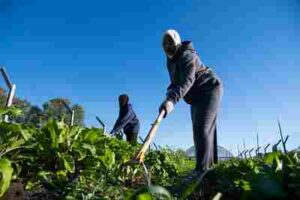
Intercropping fields may also require more extensive weeding and pest control efforts because various crops provide diverse microenvironments or ecosystem for weeds and pests. It is important to address these challenges promptly in order to prevent competition (with weeds) for resources and potential yield losses.
In some cases, intercropping may depend on manual labor for tasks like harvesting and weeding. This can be both labor-intensive and time-consuming, specially in larger fields where the intercropping practice is scaled up.
Intercropping may not always align with mechanized farming systems, where large machinery and equipment are utilized for planting, tending, and harvesting. The need for manual intervention and the complex crop mix can hinder the efficiency of mechanization.
However, it is important to note that despite the time-consuming nature of intercropping, it often yields significant benefits in terms of enhanced productivity, resource utilization, and resilience to environmental challenges. The extra time invested in managing intercropped fields can lead to improved overall crop yields and sustainability.
Overview of the Efficiency of Intercropping
The efficiency of intercropping is a complex concept that depends on various factors, including crop selection, spacing, management, and local conditions. The most common measure of efficiency in intercropping is the Land Equivalent Ratio (LER).
LER is a variable that indicates the relative efficiency of intercropping in comparison to monoculture (growing a single crop in the same area). An LER greater than 1 implies that intercropping is more efficient in terms of land use.
Based on research, intercropping often saves space and increases land use efficiency.
On average, intercropping can save around 18 to 23% of the land required for the same species in sole crops. This means that the same crop outputs can be obtained on a smaller land area when intercropping is practiced effectively. While intercropping may be more time-consuming, its efficiency in terms of resource use and yield can make it a valuable and sustainable agricultural practice.
2). Increased Labor Cost
One significant drawback of intercropping as an agricultural practice, is that it can lead to increased labor costs. Discussions here show how this factor affects the practice of intercropping.
Causes of Increased Labor Cost and Its Effects on Intercropping
The increased cost of labor that often characterizes intercropping can be linked to weeding and maintenance; monitoring, and harvesting.
Intercropping often involves planting different crops together in the same field, and these crops may have varying growth patterns and nutrient requirements. The resulting complexity can make it challenging to manage weeds effectively. Farmers may therefore need to invest more labor and time in weeding, to ensure that unwanted plants do not compete with the intercropped species for resources. This can increase labor costs significantly.
With different crops growing together, monitoring and managing the growth and performance of each crop can be more labor-intensive. Farmers must keep a close eye on the intercropped crops to address any issues promptly. It may require more effort to assess the needs of each crop and provide the necessary care.
Harvesting in intercropped fields can be more labor-intensive than in monoculture fields. Since multiple crops may mature at different times, harvesting may need to be done sequentially, involving more labor hours.
Intercropping often involves crop rotation and succession. The need to prepare the field for different crops, plant at specific times, and maintain a balanced mix of crops can result in increased labor requirements.
Ensuring that each crop receives the right amount of resources, such as water and nutrients, can also require more labor. Proper allocation of resources is important to optimize crop growth and prevent unfavorable competition between crops.
The choice of companion crops and their spatial arrangement in the field demands careful planning. Farmers may need to invest time in selecting suitable intercrop combinations and arranging them effectively, which can again be labor-intensive.
Additional Notes On the Overall Effects of Intercropping
Intercropping, in spite of the potential disadvantages like increased labor costs, offers various benefits and positive effects. (Positive) effects of intercropping include; enhanced yield, pest control, resource efficiency, improved soil health, risk reduction, and sustainability.
Increased crop yields may result from intercropping compared to monoculture, primarily due to efficient resource utilization and reduced pest and disease pressure.
Different crops can serve as natural pest repellents for each other. For example, the scent or structural characteristics of one crop may deter pests from attacking another, thereby reducing the need for chemical pesticides.
Intercropping optimizes resource utilization, by making more efficient use of sunlight, water, and nutrients. This contributes to higher productivity.
Crop diversity in intercropping systems can contribute to soil conservation by enhancing soil health, reducing soil erosion, and maintaining soil fertility over time.
By growing multiple crops together, farmers can reduce the risks associated with crop failure due to factors like pests, diseases, or adverse weather conditions.
Intercropping aligns with sustainable agricultural principles, as it promotes biodiversity, reduces the environmental impact, and supports long-term farming sustainability.
Despite the increased labor costs associated with intercropping, its positive effects often outweigh the disadvantages, making it a valuable and sustainable farming practice in many regions.
3). Higher Overall Complexity: One of the Disadvantages of Intercropping
While intercropping offers several advantages, one of its disadvantages is the higher overall complexity that this farming system introduces. Here we discuss how this factor affects the intercropping practice.
Causes and Effects of Complexity in Intercropping Schemes
Complexity of intercropping can be attributed to factors like; management challenges, spatial arrangement, crop selection, monitoring and adaptation, harvesting, labor and attention.
Intercropping increases the complexity of crop management. When multiple crops are grown together, each with its unique growth requirements and vulnerabilities, farmers must pay close attention to ensure that each crop receives the appropriate care. This detail and complexity can lead to challenges in decision-making and management.
Planning the spatial arrangement of different crops in the field can also be a complex exercise. Here, there is need to consider factors like growth rates, resource utilization, and potential competition between crops. Incorrect arrangement or spacing can lead to reduced crop yields or resource imbalances.
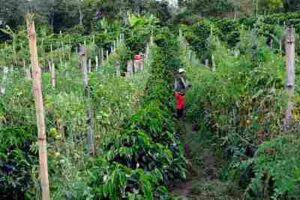
Selecting the right combination of crops for intercropping can be a complex task. This is due to the need, to consider compatibility, growth habits, nutrient requirements, and pest resistance of each crop. Making informed choices is essential for the overall success of intercropping.
The complexity of an intercropping system accentuates the requirement of continuous monitoring and adaptation. Farmers must be vigilant to detect signs of resource depletion or imbalances, pest infestations, or other issues that may arise due to the interaction of multiple crops.
As stated before, different crops in an intercropping system may mature at varying times. This implies that harvesting must be conducted with precision to avoid damaging unripe crops. It can be a logistical challenge to coordinate the timing of harvest for multiple crops.
Generally, intercropping demands more attention from farmers compared to monoculture farming. It requires in-depth knowledge, expertise, and a systems-based approach. This can be labor-intensive and may require a higher level of skill and dedication.
Overview of the Limitations of Intercropping
The limitations of intercropping include; complexity, management skills, labor-intensiveness, reduced efficiency (in some cases), and risk of imbalances. Further elaboration of these factor is given below;
1. Increased complexity of intercropping systems can be a limitation for some farmers, especially those who are not well-versed in this method of agriculture.
2. Effective intercropping demands a higher level of management and agricultural knowledge, which may not be accessible to all farmers.
3. The labor-intensive nature of intercropping can be a limitation for large-scale, mechanized farming operations.
4. In some cases, the efficiency of planting, weeding, and harvesting may be reduced, leading to increased labor costs.
5. If not managed well, intercropping can be riddled with resource imbalances, competition among crops, and lower yields.
Despite these limitations and the higher complexity of intercropping, many farmers embrace this approach because of its numerous potential benefits, which include improved yields, pest control, and efficiency of resource consumption. The key lies in careful planning, management, and ongoing adaptation to the specific needs and conditions of each intercropping system.
4). Expert Knowledge is Often Required
Intercropping, while a time-honored agricultural technique, has evolved to require a more in-depth understanding and expert knowledge in modern farming practices.
This presents a disadvantage for some farmers that desire the benefits of intercropping but lack access to such expertise. Discussions here address how the requirement for expert knowledge affects the intercropping practice.
Need for Expertise as a Drawback of Intercropping
Practices of intercropping such as crop selection, resource management, pest and disease control, adaptation and experimentation, usually require specialized knowledge that is not always available to farmers.
Successful intercropping often involves a deeper understanding of plant interactions, crop requirements, as well as management techniques. Modern intercropping strategies are not simply based on traditional practices but rather require a level of specialized knowledge that may be beyond the scope of some farmers.
Farmers need to make informed decisions about which species to intercrop. This includes considering factors like crop compatibility, growth rates and patterns, nutrient requirements, resilience and resistance to pests and diseases. In the absence of expert knowledge, selecting the right combinations of crops can be challenging.
Intercropping may require advanced knowledge of the principles and techniques of resource management. Farmers need to understand how different crops interact with each other in terms of the utilization of resources, such as water, nutrients, and solar energy. Expertise is needed to optimize these interactions.
Interactions between intercropped plants can influence the dynamics of pests and diseases. Managing these interactions effectively often requires expert knowledge in pest control and disease management in order to prevent outbreaks and associated losses.
Monitoring and modifying or adapting intercropping systems over time to ensure a balanced and productive coexistence of crops, are essential measures that necessitate expert management. Recognizing signs of resource imbalances, pest infestations, or other issues all requires expertise.
In some cases, successful intercropping involves experimentation and research. Farmers may need to test various crop combinations and management techniques to find the most effective strategies. This requires a scientific approach and knowledge.
Overview of Intercropping Strategies
Examples of intercropping strategies include; planting, tall-short crop combinations, legume intercropping, companion planting, row or strip intercropping, and relay cropping. They are outlined below;
1. Intercropping deep-rooted crops with shallow-rooted crops is a strategy which optimizes the use of soil resources at different depths.
2. Another intercropping strategy involves planting a tall crop with a shorter crop that requires partial shade. The taller crop can provide shade without overshadowing the shorter crop.
3. Planting leguminous crops with other crops can enhance soil fertility through nitrogen fixation.
4. Companion planting entails pairing crops that have mutually beneficial relationships, such as deterring pests or enhancing pollination.
5. Arranging rows or strips of different crops within the same field is an effective way to maximize resource utilization while minimizing competition.
6. Relay cropping is the sequential planting of different crops in the same field in order to optimize space and resource use.
While expert knowledge can significantly enhance the effectiveness of these strategies, there are simplified approaches that can be applied by a broader range of farmers, which may require less expertise but still provide some of the benefits of intercropping.
5). May Cause Lower Yields
One of the potential disadvantages of intercropping is that, when faced with deficiencies in effectiveness, expertise and/or efficiency, it may result in lower yields compared to monoculture farming. This factor can affect the practice of intercropping in various ways, some of which are discussed in the subsection below.
How Potential Low Yields Affect Intercropping
Factors usually linked to low productivity of intercropping schemes include; crop competition, imbalance in resource utilization, inefficient space utilization, management challenges and issues of compatible crop selection.
When multiple crops are grown together, they may compete for essential resources like nutrients, light and water. This competition can limit the growth and yield potential of each of the involved crops. The presence of neighboring plants can lead to reduced access to critical resources for productivity.
Different crops may have varying resource requirements as well as growth rates. In intercropping, if one crop is more aggressive or efficient at consuming resources than the other, it can outcompete its companion crop, resulting in lower yields for the less competitive species.
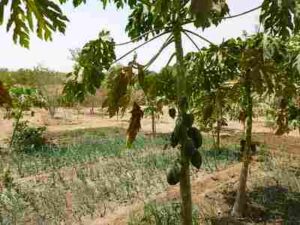
In some cases, intercropping may not efficiently utilize the available land space. Certain crops may have growth habits that create excessive spreading and shading, which can limit the amount of sunlight that is accessible to neighboring plants. This shading effect can hinder the photosynthesis and growth of affected crops, leading to reduced yields.
As discussed earlier, intercropping often requires more intensive management. Farmers need to carefully monitor the interactions that occur between crops, addressing issues such as resource imbalances, pest and disease outbreaks, and adaptation to changing (biotic and abiotic) conditions. If these management challenges are not met effectively, yields may suffer.
In order to minimize the risk of lower yields, it is crucial to select crop combinations that are compatible in terms of their growth habits, resource requirements, and overall resilience. If incompatible crops are intercropped, it can constitute the foundation for unhealthy competition and reduced yields.
Achieving optimal crop combinations and management techniques may require repetitive periods of experimentation and adaptation. Farmers may need to refine their intercropping strategies over time to find the most productive and balanced approach.
It is important to note that while intercropping can sometimes result in lower yields compared to monoculture, in other cases it offers other benefits, such as improved pest and disease management, and optimal productivity. The decision to practice intercropping should be based on a careful evaluation of these trade-offs and the specific goals of the farming system.
6). Intercrops May Serve as Nurseries for Pests and Diseases
One of the potential disadvantages of intercropping is that intercrops may serve as nurseries for pests and diseases. This factor can affect the practice of intercropping in several ways, s highlighted in this section.
Pest and Disease Facilitation in Intercropping
Intercropping may increase the complexity of crop infestation, so that eradication of pests becomes difficult. It may foster the buildup of pests and the transmission of diseases in some farms.
When multiple crop species are grown together, they can provide a diverse range of microhabitats and food sources for pests and disease vectors. In some cases, intercropping can inadvertently promote the buildup of pest populations because certain pests may find both their preferred host crop and alternative host crops within the same field. This can lead to higher pest pressure on the primary crops.
Intercropping can facilitate the transmission of diseases between different crops. If one crop within an intercropping system becomes infected with a disease, it can spread to neighboring crops more easily when they are in close proximity. This can lead to a higher incidence of diseases that affect multiple crop species.
The diversity of crops in an intercropping system can attract a wide range of pests as well as beneficial insects. While some beneficial organisms can help to control pests, the overall complexity of the system may also make it more challenging to manage pests effectively. Farmers may therefore need to navigate a complex web of interactions between crops and pests.
Pesticide application in intercropping systems can be more challenging. Spraying pesticides to control specific pests may have unintended consequences for non-target crops or beneficial insects. Careful pesticide management is required in such cases to minimize harm to non-target organisms.
Intercropping often demands more intensive management to address the increased pressure from pests and diseases. This usually includes regular monitoring, pest identification, and the implementation of integrated pest management strategies in order to maintain crop health.
The selection of compatible crop species is essential to mitigate the risk of pest and disease issues. Farmers need to choose intercrop combinations that are less susceptible to the same pests and diseases and that can complement each other in pest management.
While intercropping can create challenges related to pests and diseases, it is also known to offer the advantage of natural pest control through the promotion of beneficial biodiversity, with a similar mechanism to other sustainable agricultural elements like organic farming and permaculture.
Some intercrop combinations can disrupt the life cycles of pests, leading to reduced pest pressure. Successful intercropping relies on the careful selection of crop species, appropriate management practices, and a thorough understanding of local pest and disease dynamics.
7). Possible Incompatibility of Crop Species: One of the Disadvantages of Intercropping
Another of the potential disadvantages of intercropping is the possible incompatibility of crop species involved. This factor can affect the practice of intercropping in several ways, some of which are discussed below.
Incompatibility as a Limitation of Intercropping
The nutrient demands of different crops vary. Some crops may require specific nutrients from the soil, and the competition for these essential nutrients can lead to reduced growth and lower yields in intercropping systems. If two or more intercropped species have significant overlap in their nutrient requirements, it can result in intense competition that affect their respective growths.
Crop species also have different growth patterns, including heights, root systems, and rates of mss increase. Incompatibility in growth patterns can lead to issues such as shading, where taller crops overshadow shorter ones, reducing their access to sunlight and affecting their growth. This competition for light can be detrimental to the less competitive crop.
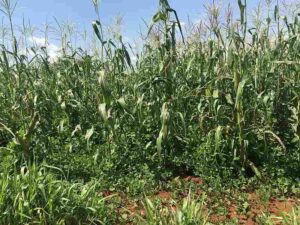
In intercropping, the spacing between crop rows and strips, as well as those between individual plants, may not always be suitable for both species. For example, if one crop requires more space between rows, it may interfere with the growth of another crop that requires closer spacing. This can result in an inefficient use of space and other vital resources.
As stated earlier, some crop species may mature and need to be harvested at different times. Incompatibility in harvesting schedules can make it challenging to manage and harvest intercropped crops effectively. It may in turn lead to difficulties in mechanized harvesting due to the different growth stages of the intercropped species.
Crop species may compete for resources such as water, light, and nutrients. If the resource competition is too intense, it can lead to lower overall yields and reduced crop quality.
Overview of Crops Most Suitable for Intercropping
The choice of suitable crops for intercropping depends on various factors, including local climate, soil conditions, availability of resources, and the specific goals of intercropping. However, some crop combinations are commonly used in intercropping systems due to their compatibility and complementary growth patterns.
Crops that are most suitable for intercropping include resilient, compatible and adaptable plants like maize and legumes, sorghum and groundnuts, tomatoes and basil, cotton and soybeans. These pairs are discussed briefly as follows;
1. Maize, a tall crop, is often intercropped with legumes such as beans or cowpeas. Legumes can fix nitrogen in the soil, benefiting maize growth, and their shorter stature complements the taller maize plants.
2. Sorghum and groundnuts (peanuts) are often intercropped in regions with limited water resources. The taller sorghum provides some shade for groundnuts, helping to conserve soil moisture.
3. In small-scale or home gardens, tomatoes and basil are compatible intercropping partners. Basil can help to deter some tomato pests, and the combination is often used in organic gardening.
4. Cotton and soybeans can be intercropped due to their different growth habits. The soybeans can serve as a cover crop, protecting the soil and reducing weed competition in the cotton field.
In general, the choice of suitable crops for intercropping should consider the specific conditions of the farming environment and the intended goals, whether it is improved yields, pest control, or resource-efficient land use. Compatibility in terms of nutrient demands, growth patterns, and resource requirements is also key to successful intercropping.
8). Planning and Maintenance are More Intensive
Intercropping requires extra care and effort in planning and maintaining a viable crop rotation. This factor affects the intercropping practice in several ways, and can even serve as a disadvantage.
Aspects and Implications of Planning and Maintenance in Intercropping
Intercropping typically requires thorough planning, in areas like crop selection and spatial arrangement. It also demands effective maintenance, continuous adaptation, time investment, and long-term commitment.
Successful intercropping requires careful and thorough planning. Farmers must decide which crop species to intercrop, considering their compatibility, nutrient demands, and growth patterns. They also need to plan the arrangement of crops within the field in order to optimize resource utilization, and reduce competition.
Intercropping involves selecting the right combination of crops. This selection process is important because incompatible crop combinations can lead to reduced yields or overall crop failure. Farmers need to consider the intended outcomes of intercropping, such as pest control or increased production, when choosing crop combinations.
Proper spacing and positioning of crops within the field are essential. Each crop should have adequate space to grow and access essential resources such as sunlight and nutrients. Careful spacing is therefore part of the planning process and requires precision in planting.
Intercropping systems demand ongoing maintenance in order to ensure that the crops coexist harmoniously. Weeding, pest control, and nutrient management may demand more attention in intercropping compared to monoculture. Farmers need to monitor the field regularly and address any issues promptly to maintain the health of all intercropped species.
Implementing intercropping effectively often involves a progressive learning curve. Farmers may need to acquire new knowledge and skills related to crop selection, arrangement, and maintenance. Inexperienced farmers may face challenges in managing intercropping systems efficiently.
As implied so far, intercropping may require more time and effort compared to monoculture. Planning, management, and several years of implementation are essential for the success of intercropping. Farmers must be willing to invest the necessary time and resources.
What this means is that intercropping often yields its full benefits over the long term. It may take several years to establish a well-functioning intercropping system. This long-term commitment is necessary to maximize the advantages of intercropping, such as pest control, soil health, and resource efficiency.
Successful intercropping often involves precision farming practices. This means that farmers need to be attentive to the specific needs of each crop within the intercropped system and provide tailored care.
Lastly, intercropping plans should adapt to local conditions, including climate, soil quality, and pressures from pests and diseases. Farmers need to continuously assess their intercropping practices and make adjustments as needed.
Conclusion
Disadvantages of intercropping are;
1. Relatively Time Consuming
2. Increased Labor Cost
3. Higher Overall Complexity
4. Expert Knowledge is Often Required
5. May Cause Lower Yields
6. Intercrops May Serve as Nurseries for Pests and Diseases
7. Possible Incompatibility of Crop Species
8. Planning and Maintenance are More Intensive
